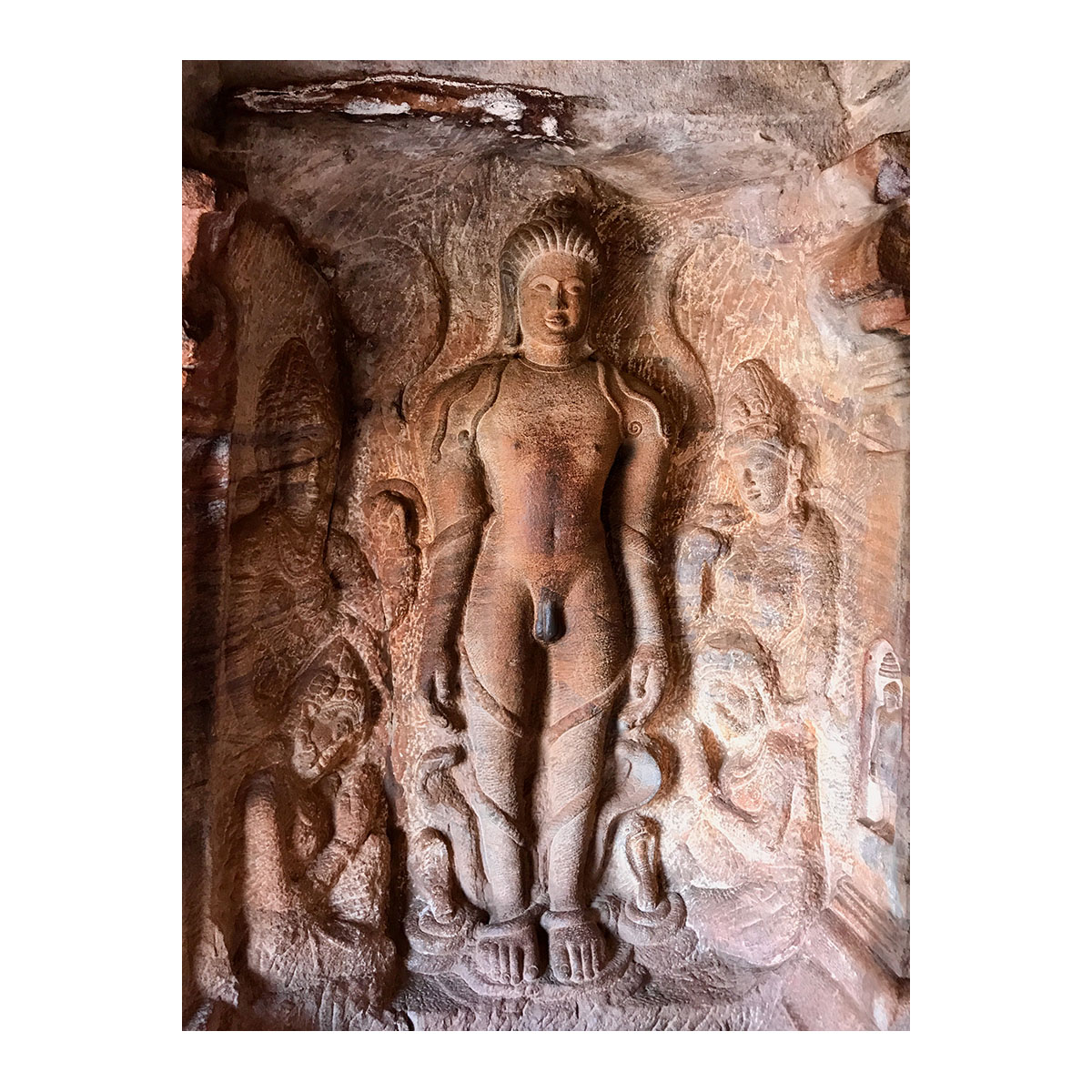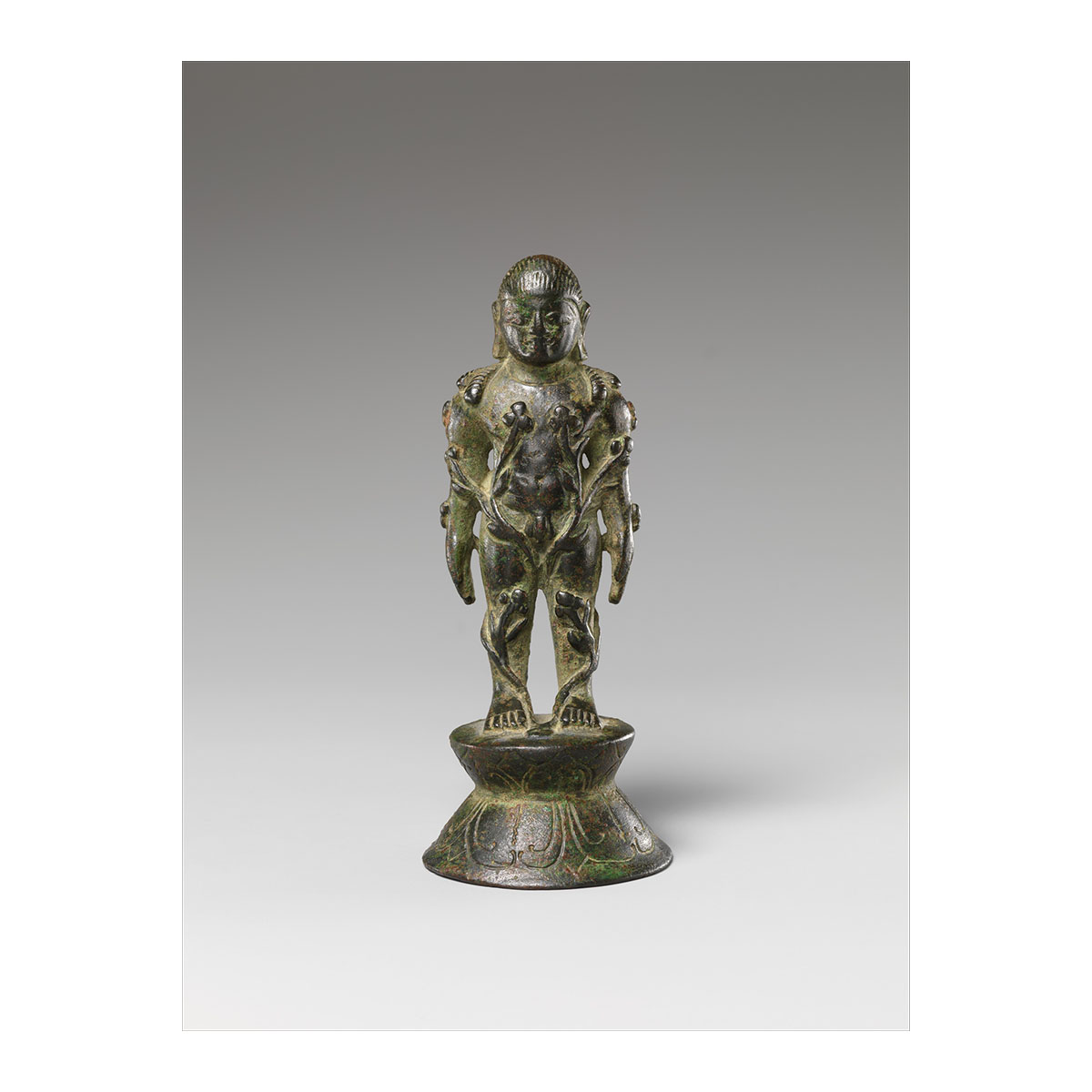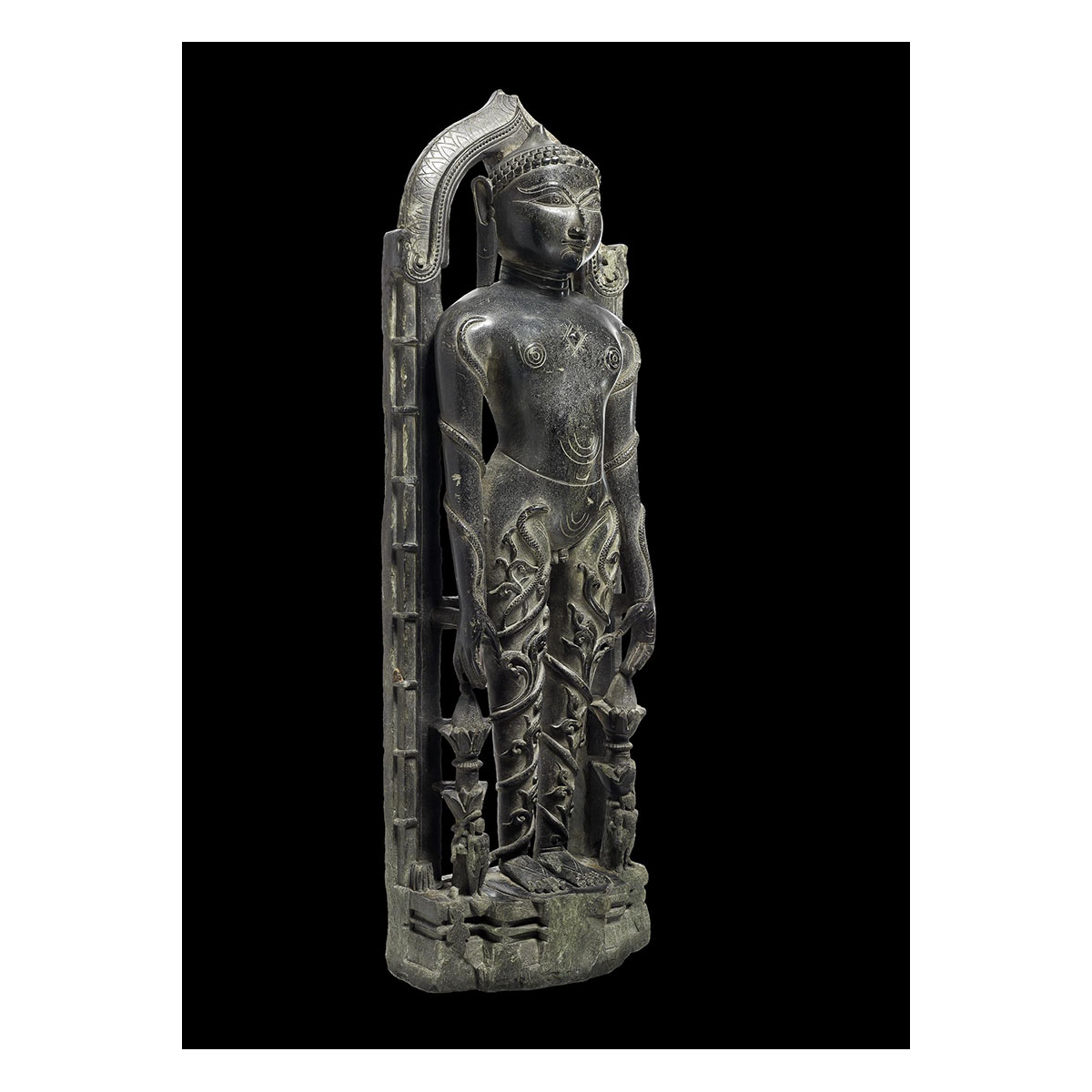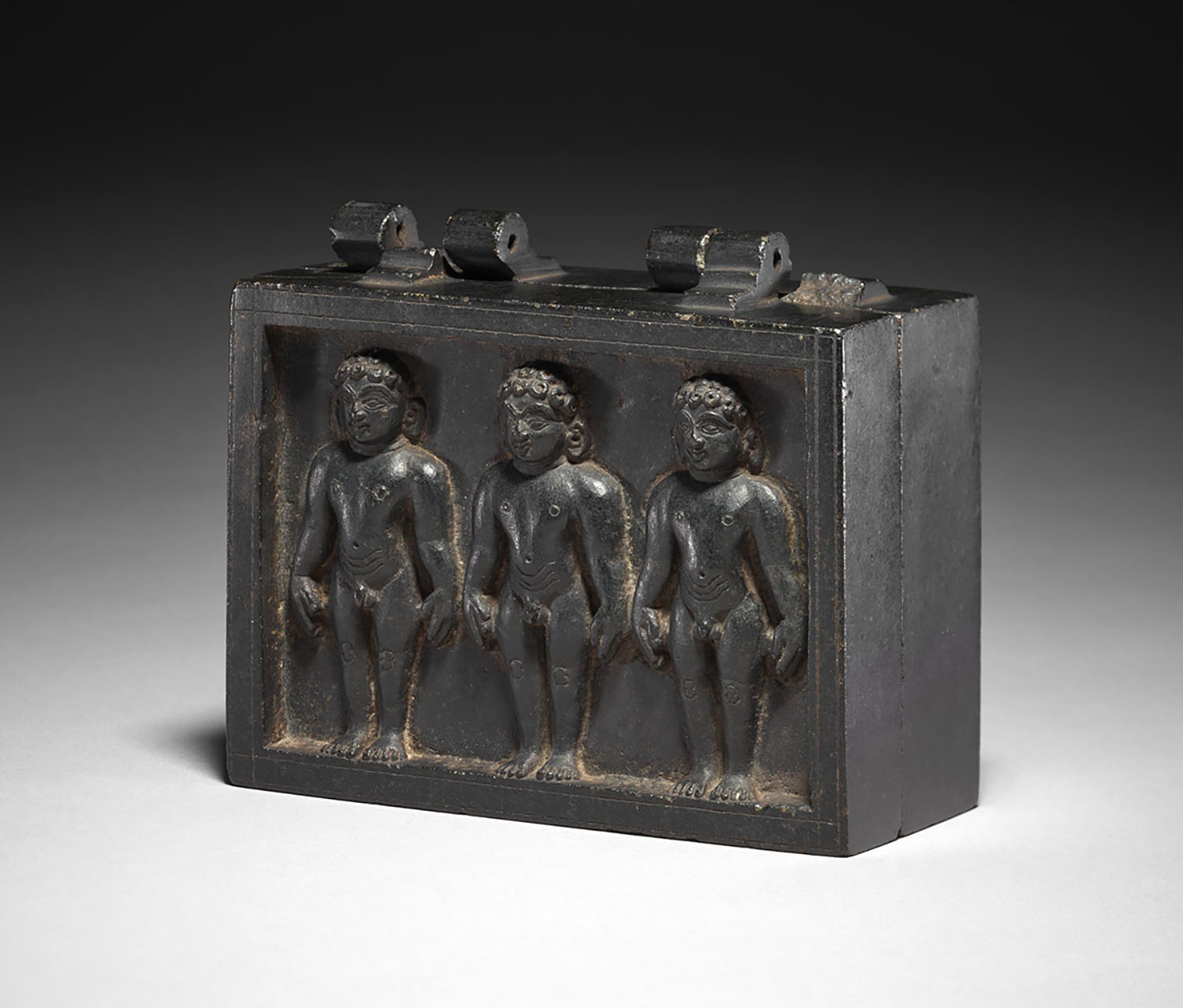ARTICLE
Bahubali
A popular figure in Digambara Jain mythology, Bahubali (meaning “the strong-armed”) is believed to have been the son of Rishabhadeva, the first Jina. Also known as Gomateshvara, Bahubali is most popularly recognised through five monolithic statues erected in present-day Karnataka through the mediaeval period.
Bahubali is mentioned in the religious literature of both the Svetambara and Digambara sects of Jainism, although his worship is more prominent amongst Digambaras. The most influential depiction of his life comes from the Adipurana of Pampa, a Kannada epic composed in the tenth century in the court of a feudatory of the Rashtrakuta Dynasty. In the Adipurana’s narrative, Rishabhadeva and all of his sons, with the exception of Bahubali, gave up their kingdoms in favour of his eldest son, Bharata. Eventually, Bharata and Bahubali fought with each other, with Bahubali initially overpowering his brother. However, towards the end of their conflict, Bahubali was overcome with regret at the bloodshed that had taken place as a result of their battles, and renounced his kingdom. Going into the forest, he is said to have stood in one place in the kayotsarga (motionless) position. He was eventually sought after by his sisters, Brahmi and Sundari, who found him covered in vines and creepers, with bird nests in his tangled hair. The sisters removed the creepers from his body, urging him to let go of his pride and remorse, at which point he is said to have gained enlightenment and attained kevala.
This narrative is central in the iconography of Bahubali. He is depicted in the nude, standing upright in the kayotsarga position with vines around his arms and legs, and matted, curly hair. The earliest known image of him is located in Badami Cave 4, dated to the late sixth century; visual representations of him, especially with vines, remain consistent in the Deccan through the next few centuries.
Bahubali was initially represented alongside Parshvanatha, the twenty-third tirthankara. Gradually, he came to be represented individually through colossal monolithic statues. The origins of these statues are not entirely clear: they may be linked to highly public abhisheka associated with Jain idols in the early mediaeval Deccan. The date of the Adipurana also suggests that the Bahubali cult was increasingly popular with royal families from the tenth century onwards. One of the most prominent monolithic Bahubali statues, 57 ft tall, was commissioned in the late-tenth century by the Ganga feudatory king Chamundaraya at the site of Shravanabelagola; as of writing, it continues to draw pilgrims from across India.
Bahubali continues to be worshipped in Jain temples. According to scholars, additional elements, including an ant-hill and attendant women figures, were added to Bahubali’s iconography from the tenth to the fourteenth century, particularly during the reign of the Hoysala Dynasty. From the late mediaeval period onwards, the popularity of Jainism began to fade in the inland Deccan, but monolithic statues of Bahubali continued to be commissioned. Examples may be found at Karkala (fifteenth century) and Venur (seventeenth century), where they are still worshipped by local Jain communities.
Bibliography
Our website is currently undergoing maintenance and re-design, due to which we have had to take down some of our bibliographies. While these will be re-published shortly, you can request references for specific articles by writing to hellomapacademy@map-india.org.










